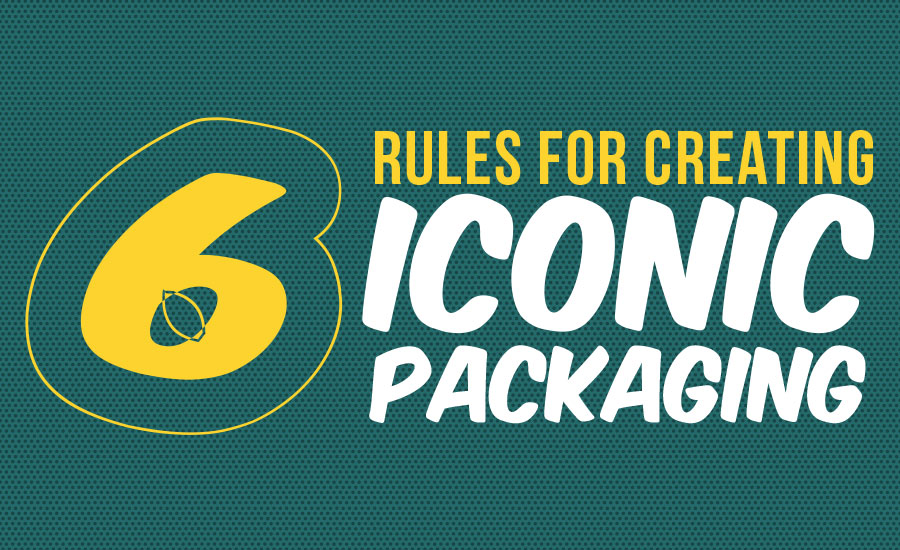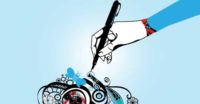Six Rules for Creating Iconic Packaging
Insights and takeaways from an award-winning industry veteran.

When I started The Biondo Group in the 1960s, the prevailing sentiment was to reject elitism and materialism in favor of conservative consumption. Name brands were pure, and product lines were focused. From a packaging perspective, this meant we had to communicate a level of authenticity and simplicity, which resulted in design taking on a sleeker and more contemporary look. It was easy to make clients like Corning successful when our job was so laser focused and uncomplicated.
Coined as the “me generation,” the ‘70s belonged to the baby boomers. Their indulgences became the most influential factor contributing to new products flooding the market. While design businesses were booming, designers had to now manage up to three or four product extensions and sub-lines making their job increasingly more complex and marketing influenced.

The ‘80s and ‘90s proved to be very different times. For the first time, companies targeted young buyers, and their products became a reflection of individual empowerment. Brands started to represent one’s cultural background and status, which ultimately evolved into the need for highly unique brand expressions. Thanks to the emergence of computers and design software, designers now had the tools needed to conceptualize and execute elaborate creative designs. With the proliferation of product lines resulting in increased choice for consumers, the concept of brand loyalty started to erode. Our work for Häagen-Dazs and Ronzoni during this time are excellent examples of how we managed multiple product lines while creating very distinct personalities.
Today, technology is the key driver to cultural changes that are happening at lightning speed. As a result, companies and brands must be in a perpetual state of flux just to keep up with evolving consumer demands. Whether it’s the impact of Omni channel strategies or the pressure on brands to show up across all channels of communication, brands like never before need to deliver holistic and captivating experiences to stay in the game.
Regardless of the technological advances that changed the design industry or the shifts in the marketplace, the below six principles remain consistent throughout the decades.

1 research is a tool, not the future
Unfortunately, due to financial pressures, competition and an overreliance on testing, companies now have empowered consumers to make the most critical decisions for their brands and businesses. For this reason, it is no surprise why we see so many lackluster brands on shelves today. In my opinion, placing too much emphasis on “consumer influence” has resulted in overly complex packaging designs, conflicting messages and insipid brand personalities. Don’t get me wrong, we have and will always recognize the need for consumer input and embrace its role. However, we simply reject that it should be at the expense of listening to the experts, both in design and on the client side of the business. When used correctly, research should be employed to check potential disasters, inspire creativity, and test the thresholds of a brand’s potential rather than become the vision of the future.

2 measure against two key ingredients
When it comes to brand recognition, keep in mind that at every touch point with your consumer you are building a relationship, not fulfilling a transaction. Two key ingredients form these attachments: brand recognition and building emotional appeal. First, to consistently get recognized on a crowded shelf you must utilize your logo to trigger a moment of connection. Critical to perception is prioritizing the brand mark within the communication hierarchy of the packaging. Second, the laws of attraction state that associations are strongest when presented with a heightened state of emotion and excitement. For brands this means they must elicit powerful urges such as hunger, beauty, individuality, frivolity, seduction, etc. When executed correctly, packaging will stand out and has the power to change behavior, influence purchase and build loyalty.
3 put pen to paper
Over the years, technology has replaced sketching as the primary tool used by designers in our industry. What was once handcrafted has now been diminished to manufactured slickness. What we’ve learned by experimenting is that the movement and stimulation of sketching activates multiple areas of the brain in ways working on a computer can’t. We’ve ultimately concluded that designers are at their creative and analytical best when they begin to problem solve with a pencil and paper first. For us, starting concepts with sketching has guided our designers to a fluidity of thinking, a heightened sensitivity to craft and smarter, more relevant executions for our clients.

4 step back
A recent article in the Harvard Business Review points out that the most productive individuals understand the benefit of taking a step back. The irony is creativity is not linear, yet we have to live with increasingly shorter deadlines. Our perspective is counterintuitive, but it works: Stepping back with confidence is the best thing you can do when the heat is on. Percolating, taking a break, smelling the roses—whatever you call it—leads to creative troubleshooting. Learning to take a step back and not getting caught up in the immediate stress lets you put circumstances in perspective and allows for better work—and perhaps a more fulfilling life.

5 experience, collect, inspire
Inspiration comes from a broad range of experiences both conscious and subconscious. The brain naturally records every experience. Use your surroundings, dreams, objects, thoughts and interactions as a catalog of potential inspiration to be applied at a future time. When it comes to our physical surroundings, I use my office as an inspiration gallery. I do not consider what I do to be a traditional business, which is why I don’t showcase my accolades or the packaging we’ve done through the years. Instead, I have pre-Colombian art, African art, paintings and sculptures all over the studio.
We have found that the more diverse the experience, the easier it is to make the unique connections and associations needed to solve complex design challenges. The process of becoming inspired directly leads to crafting brands to be ownable and unique. To give you an example, while it can be useful in the design process to seek stock imagery, we caution designers to think of it as one of the collected inputs; a tool rather than the answer to solving problems.
6 take charge
Never lose sight that the client is working with you for a reason—they’re paying you for your insights and expertise. Debate, transparency and truth lead to relationships that are mutually fruitful. Get comfortable with respectfully challenging your client. By being honest, I have built long-term relationships this way and maintained clients for decades.
Throughout the decades, life has become more complex. As a result, the marketplace and products have naturally grown to meet the new demands of their consumers. While we’ve consistently evolved and tailored our approach to the dynamics of the decades, these six principles have helped us meet the ever-changing expectations of consumers and will help you navigate, successfully, the ever-evolving global landscape in package design.
Looking for a reprint of this article?
From high-res PDFs to custom plaques, order your copy today!





